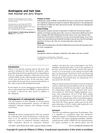Crown progress Nov 2024 to March 2025. Full recovery possible? Progress Pictures 3/3/2025
A 29-year-old is using liposomal topical finasteride/minoxidil and low-level light therapy (LLLT) to improve hair growth, showing significant progress in crown recovery. The user prefers liposomal topicals to avoid side effects from oral finasteride and uses the iRestore Essential device for LLLT.
View this post in the Community →
Similar Community Posts Join
5 / 198 resultscommunity Current regimens of folks and discussions.
30 y/o male started balding at 22, began treatment at 29 using oral dut, oral min, derma rolling, nizoral shampoo, and considering low level light therapy. Plans to monitor progress for 1-2 years and may get hair transplant or use hair system if needed.
community Crown recovery update - 7 months of treatment
A 29-year-old reports positive hair recovery after 7 months using liposomal topical finasteride and minoxidil, low-level light therapy, and vitamins, following a 3600 graft DHI procedure. They experienced no side effects from the topical treatment, unlike with oral finasteride.
community Crown recovery - almost fully back. November 2024 to now
A 29-year-old shared their crown hair recovery using a daily liposomal topical solution of finasteride and minoxidil, low-level light therapy, and specific vitamins, noting significant improvement without side effects. They experienced issues with oral finasteride previously but not with the topical treatment.
community A Nuanced Look at Microdosing Topical Finasteride
The conversation discusses using a low dose of topical finasteride to achieve hair benefits with minimal systemic exposure. Users share experiences and opinions on dosing, systemic buildup, and side effects of both topical and oral finasteride.
community New warning by FDA on topical finasteride
The FDA warned that topical finasteride can cause serious side effects like sexual dysfunction and brain fog, similar to oral finasteride. Compounded topical formulations pose additional risks due to lack of regulation.
Related Research
6 / 1000+ results
research Androgens and Hair Loss: An In-Depth Analysis of Androgenetic Alopecia
The document concludes that hair transplantation and gene therapy may be important for future hair loss treatment.

research Exploring the Potential of Minoxidil Tretinoin Liposomal-Based Hydrogel for Topical Delivery in the Treatment of Androgenic Alopecia
Minoxidil tretinoin liposomal based hydrogel shows promise for effective treatment of hair loss by delivering both drugs at the same time.

research Experimental and Early Investigational Drugs for Androgenetic Alopecia
New hair loss treatments may include topical medications, injections, and improved transplant methods.

research Female Pattern Alopecia: Current Perspectives
Female pattern hair loss is caused by multiple factors and while treatments like topical minoxidil, hormone therapy, and low-level light therapy can help, none can fully cure it.

research Hair Restoration Surgery: Challenges and Solutions
Hair restoration surgery effectively treats hair loss with natural-looking results, using techniques like stem cells and platelet-rich plasma.

research Development of Liposomal Systems of Finasteride for Topical Applications: Design, Characterization, and In Vitro Evaluation
Liposomes improve finasteride delivery for hair loss treatment, making it a promising option for topical use.